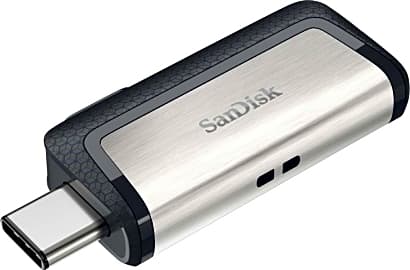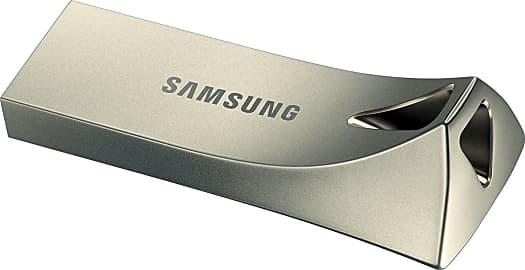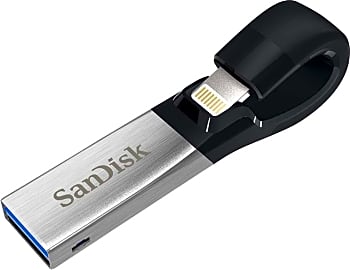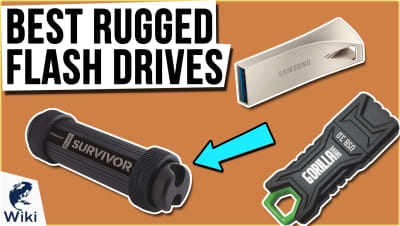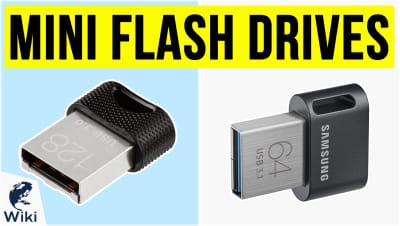The 8 Best Flash Drives

This wiki has been updated 38 times since it was first published in February of 2016. Gone are the days of toting around bulky external hard disks just to move large volumes of data. With one of these pocket-sized flash drives, you can easily store and transfer your music, pictures, and videos at high speeds between a wide variety of devices. They're available in models with USB Type-A and C interfaces as well as some that use Apple's proprietary Lightning connector. When users buy our independently chosen editorial picks, we may earn commissions to help fund the Wiki.
Editor's Notes
December 31, 2020:
There are three connectors common among current flash drives: Lightning, USB-A, and USB-C. The SanDisk iXpand is the best choice for iPhone users, and the SanDisk Ultra Dual the best for Android phone users. Both have Type-A ports as well as phone connectors, so they're perfect for transferring data.
The Vansuny Black is just about as fast as a common thumb drive comes, and in fact it performs on the same level as the premium SanDisk Extreme Pro, although the SanDisk may have more consistent quality assurance. If you're going for compact, the SanDisk Cruzer Fit, and if you need blazing speed, consider the Sabrent Rocket Nano. It is, technically, an external SSD, but it's still quite small, and its NVMe flash memory makes for ultra-fast reading and writing over the USB 3.2 bus.
April 27, 2019:
Flash drives are a fixture of mobile and desktop computing, and they come in a huge range of physical sizes, capacities, and price points. At the inexpensive end is the SanDisk Ultra Fit, though it is especially reliable. SanDisk's Ultra Dual is an excellent way to expand your smartphone's storage thanks to its USB-C connector, and if you have an iPhone, their iXpand is the way to go. The Samsung Fit is another relatively affordable choice and is as small as they come, plus it's outfitted with the brand's highly reliable flash memory. Their Bar Plus is exceptionally reliable, and partially because it's not ridiculously small, it can run at reasonable speeds with consistency. Speaking of Samsung, if you need more storage and higher performance, they make a couple truly cutting-edge eternal flash drives. The T5 is incredibly compact and lightweight and doesn't cost an arm and a leg, though while it uses a type C connector, it's still limited to USB SuperSpeed transfer rates. Their X5, on the other hand, is hands-down the fastest external drive on the market right now, although other manufacturers are racing to release competing high-speed units. Aside from its exorbitant price, its only other drawback is that it only works with Thunderbolt 3-enabled systems. Sabrent, for what it's worth, is one of the manufacturers looking to challenge Samsung's dominance on the capacity and throughput fronts. Their XTRM is a direct competitor to the X5 and comes at less than a third of the price in some sizes. Meanwhile, their Rocket Pro model works with any USB 3.1 system using a type C plug, and if you have 3.1 Gen 2 connectivity, it offers speeds far above what anything can do over USB type A. Finally, if you need a ton of storage but don't have a lot of space for it, the Corsair Voyager GTX is basically unmatched -- it's one of the only thumb drives anywhere that offers so many gigabytes with so much reliability in such a small package.
Technological Versatility In A Very Small Package
The memory capacity of the storage chip determines the memory capacity of the drive itself.
Less is more when it comes to storing large amounts of data and information in something small and portable. One must understand that as useful as external hard drives can be in certain circumstances, they aren't always the optimal solution for compact file storage. For example, if you've been tasked with a marketing presentation or sales pitch to a group of potential investors in a conference room using nothing more than a laptop and a projector screen, then a flash drive will eliminate the extra time required to fuss with an excess of cords, cables, and connections to a portable hard drive just to access your presentation files. The flash drive will have you up and running in no time.
Three main components of a flash drive's structure include the board, NAND flash memory storage chip, and the controller chip. The board holds all of the drive's internal components as well as the connector, which is the most recognizable part of the device. The connector plugs into a computer's USB port, while the board allows for bidirectional data and power transfer between the two devices. The memory storage chip is where all of the drive's files are stored. The memory capacity of the storage chip determines the memory capacity of the drive itself. The controller chip is a multi-tasking circuit that manages all of the drive's internal functions. It retrieves information from the drive and determines how to read and write data to the storage chip.
Flash drives offer several benefits that set them apart from larger data storage solutions. Firstly, their lack of moving parts makes them quite durable and less prone to malfunctioning or overheating. Next, their compact size makes them easy to transport, which is beneficial for travel purposes. The average size of a typical flash drive is around two or three inches in length, so the device can slip right into a small bag or pant pocket. The data transfer speeds and memory capacities of USB flash drives often rival those of a portable hard drive, meaning that it's possible to quickly transfer large, high-resolution video files or other memory-rich media between devices using a flash drive without sacrificing much in terms of performance.
The flash drive also shines in terms of its degree of compatibility with other devices. Many laptops, desktop computers, and even televisions have at least one or several USB ports for convenient access to files. The flash drive is also extremely energy efficient because it doesn't require the use of additional cabling to supply the electrical power coming from a computer to something like a portable hard drive and its moving components. Finally, flash drives can be used for promotional purposes for copying and pre-loading marketing content, trial software, and other files for dissemination to a large group of people.
Choosing The Most Reliable Option
Flash drives are available in a variety of memory storage capacities, so the first thing one must consider is how the device will be used. If you plan to store and transfer a lot of music, photos, and personal documents, then it may be worth the extra expense to spring for a high-capacity option. Some flash drives store up to one terabyte of data, which adds up fast when you're transferring a volume of high-definition video and audio content to and from your computer.
Look for a flash drive with a sturdy, rubberized, and shock-resistant exterior in case it gets wet or dropped when you're in a hurry.
It's also important to consider the drive speed of the device you plan to purchase. Transferring a lot of high-quality content means dealing with large file sizes, so a drive capable of speeds common to USB 2.0 or higher will make it easy for you to complete your transfers as quickly as possible. It is important to be certain that your other devices are compatible with the drive you choose, so being informed of the device's specifications is key. Many flash drives work seamlessly across both Mac and Windows operating systems, but it's always a good idea to read up on the option you're considering.
Data security is another important factor. Secure flash drives make use of either hardware or software-based data encryption technology, which comes in very handy when copying or transferring sensitive information (e.g. patient records at a hospital or details of a criminal court case).
Look for a flash drive with a sturdy, rubberized, and shock-resistant exterior in case it gets wet or dropped when you're in a hurry. Some drives are also available with an aluminum casing for extra protection from damage. Finally, if you're worried about losing the drive's top or cover, then consider an option with a retractable connector. This will provide an extra level of protection for the connector, given that it can be stored inside the drive's housing.
A Brief History Of Flash Drives
The first commercial flash drive was originally patented in 1999 by an Israeli company called M-Systems. This first device, known as the DiskOnKey, was released and sold in the United States by IBM on December 15, 2000. The drive had a memory capacity of eight megabytes, which was more than five times the capacity of the common floppy disk at the time.
By 2003, the majority of available flash drives were equipped with the USB 2.0 interface, which boasted a data transfer rate of around 480 megabytes per second. The backwards-compatible USB 3.0 technology would dramatically improve this transfer rate even further up to a maximum of five gigabytes per second on those consumer flash drives sold by 2010.
Today, flash drives are available with a range of storage capacities at relatively affordable prices. They are also capable of being written many times over, making them a truly useful form of technology for sharing large amounts of information across networks and platforms.



